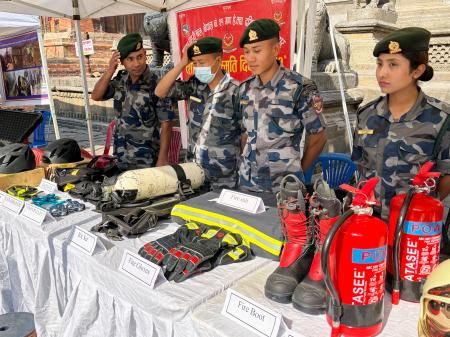Nepal Earthquake: Rebuilding Stronger – A Decade of Resilience and Innovation
Ten years after the devastating 2015 Nepal earthquake, the nation continues its remarkable journey of rebuilding, stronger and more resilient than ever. The 7.8 magnitude earthquake, and subsequent aftershocks, caused widespread destruction, claiming thousands of lives and leaving millions homeless. But from the rubble, a spirit of perseverance emerged, fueled by international aid, innovative construction techniques, and a steadfast commitment to a safer future.
The Scars Remain, But So Does Hope
The scars of the 2015 earthquake are still visible across Nepal. Many villages remain partially reconstructed, while others bear the silent testament of homes lost. The earthquake highlighted critical vulnerabilities in Nepal's infrastructure, particularly in older buildings and those lacking seismic design considerations.
Key Challenges in the Rebuilding Process:
- Funding limitations: Securing consistent and sufficient funding for long-term reconstruction remained a significant hurdle.
- Geographic challenges: Accessing remote and mountainous regions severely hampered relief and reconstruction efforts.
- Technical expertise: A lack of skilled labor and expertise in earthquake-resistant construction posed significant obstacles.
- Community engagement: Ensuring community participation and ownership in the rebuilding process was crucial for long-term sustainability.
Innovation and Resilience: A New Era of Construction
The rebuilding process isn't just about replacing what was lost; it's about building back better. Nepal has embraced innovative construction techniques and building codes to ensure future resilience against seismic activity.
Key Innovations Implemented:
- Earthquake-resistant designs: New buildings incorporate advanced seismic engineering principles, including flexible designs, reinforced concrete, and base isolation systems.
- Traditional building methods with modern twists: Integrating traditional Nepali architectural styles with modern earthquake-resistant techniques preserves cultural heritage while enhancing safety.
- Community-based reconstruction: Local communities are actively involved in the planning and execution of reconstruction projects, ensuring ownership and sustainability.
- Improved building codes and regulations: Nepal has implemented stricter building codes and regulations to ensure higher safety standards in new constructions.
[Link to a reputable source on Nepal's new building codes]
International Collaboration: A Global Effort
The rebuilding effort in Nepal has been a collaborative undertaking, with numerous international organizations, NGOs, and governments providing crucial support. This global partnership has been instrumental in providing financial aid, technical expertise, and humanitarian assistance.
[Link to a relevant article on international aid to Nepal]
Looking Ahead: A More Resilient Future
Nepal's journey of rebuilding after the 2015 earthquake is a testament to human resilience and the power of collaboration. While challenges remain, the nation is steadily progressing toward a future where communities are safer and better prepared to face future natural disasters. The focus now shifts towards long-term sustainable development, disaster preparedness, and community empowerment. This includes investing in early warning systems, strengthening community resilience, and fostering a culture of disaster preparedness.
Keywords: Nepal earthquake, Nepal earthquake 2015, rebuilding Nepal, earthquake-resistant construction, seismic design, disaster relief, Nepal reconstruction, community resilience, sustainable development, international aid, Nepal building codes.
Call to Action: Learn more about how you can support Nepal's ongoing rebuilding efforts by visiting [link to a reputable charity or organization]. Your contribution can make a real difference in helping communities rebuild stronger and safer.
